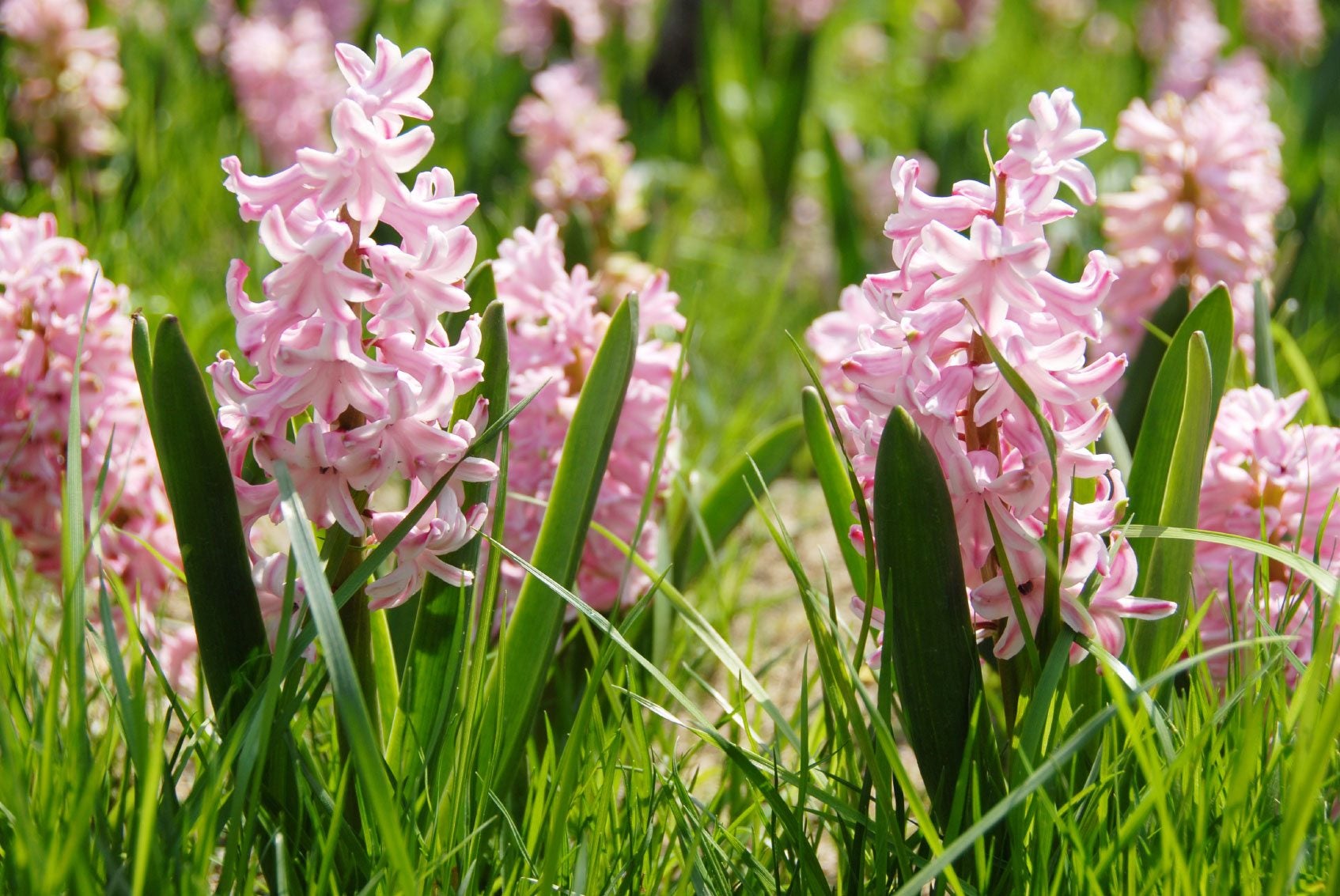Hyacinth Plant Blooms - How To Keep Hyacinth Flowers Blooming


With its plump, spiky blooms, sweet fragrance, and a rainbow of bright colors, there's no reason not to like hyacinth. Hyacinth is usually a carefree bulb that flower every spring for several years with minimal attention. If yours aren't cooperating, there are several possible reasons for this frustrating failure to flower.
Getting Hyacinth to Bloom Year After Year
Cut the stalk as soon as the flower fades. Removing the stalk is beneficial because it prevents the flower from developing seeds, which saps energy from the bulbs. However, never remove the foliage until it turns yellow, which usually occurs about six to eight weeks after blooming. The yellowing leaves may be unsightly, but removing the foliage too early prevents the plant from absorbing energy from the sun through the process of photosynthesis. This is the most important thing to remember about how to keep hyacinth flowers blooming, as the bulbs may simply not have the get up and go to produce flowers. Otherwise, hyacinth care is relatively simple. Supplemental feeding ensures the bulbs have the nutrients needed to produce hyacinth flowers every year. Feed the plants as soon as they sprout in spring, then again in early autumn. The second feeding is most important because it sustains the bulbs through the winter and prepares them for blooming the following spring. To fertilize hyacinth, just sprinkle a scant handful of any well-balanced dry garden fertilizer on the ground around each plant, then water in well. Never feed hyacinth immediately after blooming; fertilizing at this time does more harm than good and may cause rot and other diseases.
How to Keep Hyacinth Flowers Blooming in a Warm Climate
In spite of their beauty, hyacinth is a cold weather bulb that won't bloom without a period of winter chill. If you grow in USDA plant hardiness zones 9 or above, you'll need to trick the bulbs into thinking they live in a cooler climate. Dig the bulbs after the foliage dies down and turns yellow. Brush off excess soil and place them in a mesh or paper bag. Store the bulbs in the refrigerator for six to eight weeks, then replant them in late December or early January. Never store bulbs near apples or other fruit because the ethylene gases will kill the bulbs. If you've tried everything and your hyacinths still don't bloom, it may be time to dig them up and start with fresh bulbs. Don't scrimp. Big, healthy, pest resistant bulbs cost more but they produce bigger, healthier blooms. Be sure to work a little compost into the soil before planting.
Sign up for the Gardening Know How newsletter today and receive a free copy of our e-book "How to Grow Delicious Tomatoes".

A Credentialed Garden Writer, Mary H. Dyer was with Gardening Know How in the very beginning, publishing articles as early as 2007.